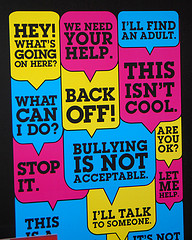Keeping kids safe from bullying has never been harder for parents, teachers, and families. If the physical world weren’t enough for us to keep up with, we’re now learning more every day about the importance of keeping our eyes and ears open for cyberbullying across our children’s email, smart phone, social media, and even school-related sites. It’s not just the Internet that’s talking about it — TV news shows, radio personalities, and magazines are increasingly talking about cyberbullying and how it affects everyone, especially kids. But what is it exactly, and what can be done to help prevent the bullying in the first place?
There are many definitions of cyberbullying out there to choose from, but they all break down to something like this:
- Cyberbullying Definition
- Cyberbullying is any form of intentional harassment that takes place online or by using electronic devices such as smartphones, personal computers, iPods, tablets, and other hand-held devices like the Kindle. It can happen through text messages, social media posts, online chat (IM‘s, or instant messaging), and on websites. (A famous example being Internet forums)
- No Personally Identifiable Information:
Be cautious about filling out online surveys, posting the answers to questionnaires on Facebook, or making any information available online or in a text that can give away your identity. Last names, home addresses, phone numbers, and even plans to go somewhere at a future time or day are all fodder for those who would try to bully.
- Say No To Geo-Location:
While geo-location tools are great for finding out where your family members are or getting yourself un-lost on a road trip, when used on social media networks and across other publicly viewable profiles it gets predators of all types that much closer to your and your kids. Resist the urge to add your location(s) to tweets and posts.
- Speak Out Against Bullying:
If you or your family see cyberbullying, regardless of how small or insignificant it may seem, say something. Too many children don’t speak up for themselves, and the damages to self-esteem can lead a child to depression, feeling nervous or scared, and in some well-publicized cases to suicide. Take bullying seriously and nip it in the bud as soon as you see it.
- Stranger Danger:
Only “friend” people online who you actually know. Close friends, family, etc. It’s so easy to let the wrong person into your online life, and once they’re in, it’s not always easy to get them out. Keeping a close eye on who you allow to follow you or see your private posts (such as the Friends Of Friends option on Facebook) can help reduce the chances of a bully smearing your profile with their vitriol.
- Be Smart About What You Publish:
Some things just aren’t meant to be shared online. Certain posts, and especially those with inappropriate material attached, can get you into hot water… fast. My rule of thumb is that I won’t post anything I wouldn’t be embarrassed to have my grandma show to all of her friends. Your mileage may vary with that one, but whatever you need to help curb your desire to post something embarrassing, use it!
- 11 Facts About Bullying – DoSomething.org
- Facts About Bullying – BullyFree.com
- Cyberbullying Research From 2004-2010 – CyberBullying.us
- Cyberbully Protection Tips for Teens – PsychologyToday.com
- Dealing with Cyberbullying – Tips for Kids and Parents to Prevent and Stop Cyberbullying – HelpGuide.org
- Cyberbullying Tip Sheets – NPCP.org
Nowadays, as many as 1 in 3 children say they’ve been cyberbullied (Source), and half of the kids who are cyberbullied never tell their parents (Source). It may come to some people as a surprise that girls are more likely to be an online bully than boys, (Source) but at the end of the day and regardless of whether it’s a boy or girl doing it — it’s wrong, it’s harmful, and it’s a growing problem among school-age children.
So what can parents, teachers, and other friends and family do to help combat the situation? Now that we have it defined, we can focus on the areas it happens. Keeping a watchful eye on Internet activity, games played on iPods and Kindles, who your kids are texting (and what they’re saying!), and in general keeping tabs on their electronic life is a fantastic first line of defense against cyberbullies. Just remember that it’s not about snooping or invading privacy. It’s about ensuring the health and well-being of your children and teaching them to use caution when interacting with anyone online.
Some of what cyberbullies pick up on are things that we put out there in the first place, so there are some things everyone (kids, parents… seriously, anyone at all) can do to help prevent bullying before it happens.
If your child or someone you know does become the victim of a cyberbully, resist the temptation to delete the offending images, text, etc. The best thing to do is to take a screenshot of the material and use it against the bully by alerting the appropriate authorities, whether that’s the police, school staff, or the bully’s parents. For something minor or an isolated incident, a lesser solution may be appropriate, but if there are any serious threats of harm, do not hesitate contacting your local law enforcement. If you need more ideas about what to do, we’ve got a whole blog post on how to deal with a cyberbully.
Additional Resources:
If you're looking for great anti-virus software that won't break the bank, try StopSign. You don't pay extra for tech support for difficult malware, and our web protection software just works. Download & install StopSign to find out why our members choose us over the other options.




Recent Blog Comments